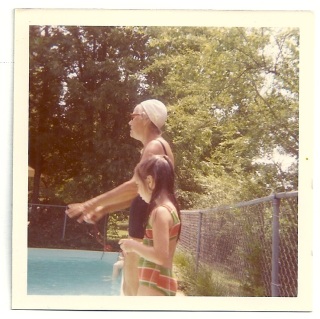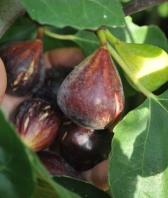 |
| Jane Fonda and Vanessa Redgrave as Lillian Hellman and Julia |
The following excerpts are from the story Julia by Lillian Hellman (1905-1984), which became a movie in 1977 with Vanessa Redgrave and Jane Fonda:
She held my hand for several minutes, and said, “Fine. Everything has gone fine. Nothing will happen now. Let’s eat and drink and see each other. So many years.”
I said, “How long have we got? How far is the other station, the one where I get the train to Moscow?”
“You have two hours, but we haven’t that long together because you have to be followed to the station and the ones who follow you must have time to find the man who will be with you on the train until Warsaw in the morning.”
I said, “You look like nobody else. You are more beautiful now.”
She said, “Stop crying about my leg. It was amputated and the false leg is clumsily made so I am coming to New York in the next few months, as soon as I can, and get a good one. Lilly, don’t cry for me. Stop the tears. We must finish the work now. Take off the hat the way you would if it was too hot for this place. Comb your hair, and put the hat on the seat between us.”
Her coat was open, and the minute I put the hat on the bench she pinned it deep inside her coat with a safety pin that was ready for it.
She said, “Now I am going to the toilet. If the waiter tries to help me up, wave him aside and come with me. The toilet locks. If anybody should try to open, knock on the door and call to me, but I don’t think that will happen.”
She got up, picked up one of the crutches, and waved me to the other arm. She spoke in German to a man I guess was Albert as we moved down the long room. She pulled the crutch too quickly into the toilet door, it caught at a wrong angle, and she made a gesture with the crutch, tearing at it in irritation.
When she came out of the toilet, she smiled at me. As we walked back to the table, she spoke in a loud voice, saying something in German about the toilet and then, in English, “I forget you don’t know German. I was saying that German public toilets are always clean, much cleaner than ours, particularly under the new regime. The bastards, the murderers.”
Caviar and wine were on the table where we sat down again and she was cheerful with the waiter. When he had gone away she said, “Ah, Lilly. Fine, fine. Nothing will happen now. But it’s your right to know that it is my money you brought in and we can save five hundred, and maybe, if we bargain right, a thousand people with it. So believe that you have been better than a good friend to me, you have done something important.”
 |
| The 1934 play The Children’s Hour by Hellman became a movie in 1961, starring Audrey Hepburn and Shirley MacLaine. |
“Jews?”
“About half. And political people. Socialists, Communists, plain old Catholic dissenters. Jews aren’t the only people who have suffered here.” She sighed. “That’s enough of that. We can only do today what we can do today and today you did it for us. Do you need something stronger than wine?”
I said I didn’t and she said to talk fast now, there wasn’t much time, to tell her as much as possible. I told her about my divorce, about the years with Hammett. She said she had read The Children’s Hour, she was pleased with me, and what was I going to do next? . . .
“I have only so much more time in Europe,” Julia said. “The crutches make me too noticeable. The man who will take care of you has just come into the street. Do you see him outside the window? Get up and go now. Walk across the street, get a taxi, take it to Banhof 200. Another man will be waiting there. He will make sure you get safely on the train and will stay with you until Warsaw tomorrow morning. He is in car A, compartment 13. Let me see your ticket.”
I gave it to her. “I think that will be in the car to your left.” She laughed. “Left, Lilly, left. Have you ever learned to tell left from right, south from north?”
“No, I don’t want to leave you. The train doesn’t go for over an hour. I want to stay with you a few more minutes.”
“No,” she said. “Something could still go wrong and we must have time to get help if that should happen. I’ll be coming to New York in a few months. Write from Moscow to American Express in Paris. I have stuff picked up every few weeks.” She took my hand and raised it to her lips. “My beloved friend. . . .”
But March and April came and went and there was no word from Julia. . . . On May 23, 1938, I had a cable, dated London two days before and sent to the wrong address. It said, “Julia has been killed stop please advise Moore’s funeral home Whitechapel Road London what disposition stop my sorrow for you for all of us.”


















You must be logged in to post a comment.